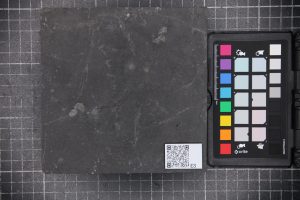
| Caithness Flagstone | Caithness Flagstone was quarried from more than seven hundred sites in Caithness. The stone consisted originally of mud and fine sand that was deposited in layers on the floor of a lake filling a large inland basin (the Orcadian Basin) during the middle part of the Devonian Period (c. 390 million years ago), when Scotland was south of the Equator at roughly the same latitude as northern Angola is today. Caithness Flagstone, which is mainly siltstone, breaks preferentially along parallel bedding planes, forming tabular blocks (‘flags’) that are hard and durable. The stone was used locally to form masonry, paving, roofing and fencing, and was used regionally, nationally and internationally to form paving. Today, Caithness Flagstone is extracted for building stone at three quarries | Caithness Flagstone — Building Stone Database Scotland (bgs.ac.uk) |
| <stone name> | |
| Reference | E3 |
| NAME | Caithness Stone Flags |
| TYPE | Sandstone |
| GEOLOGY | Devonian. Lower Old Red Sandstone |
| COUNTY | Highland |
| COLOUR | Dark grey/brown |
| TEXTURE | Very fine grained with hard, dense appearance |
| BLOCK SIZE LXBXH (mm) | 1500x1500x90mm |
| SUITABILITY | Paving, flooring, cills, cladding and copings |
| USES (1) | High Street, Bromley, Kent |
| USES (2) | Fargate, Sheffield |
| USES (3) | Edinburgh Royal Mile |
| USES (4) | The Bigg Market, Newcastle |
| Stone Names | E3 |